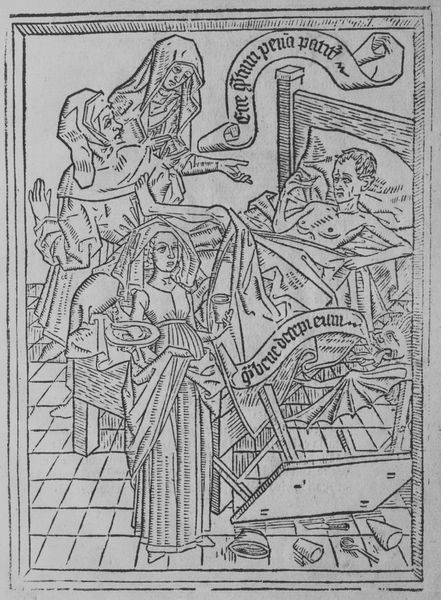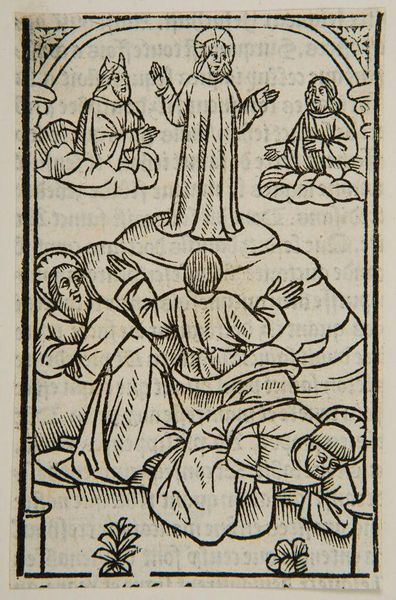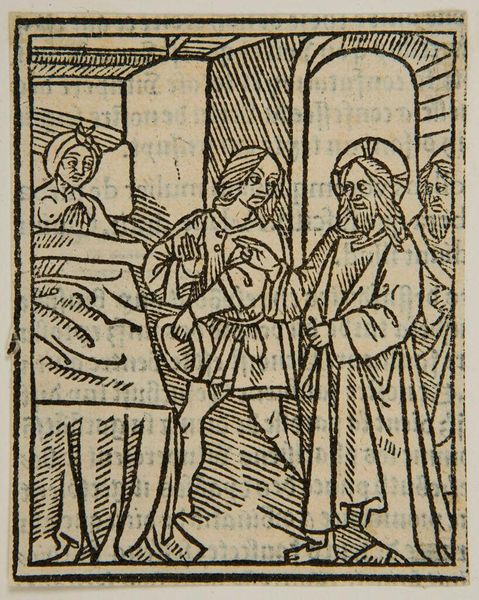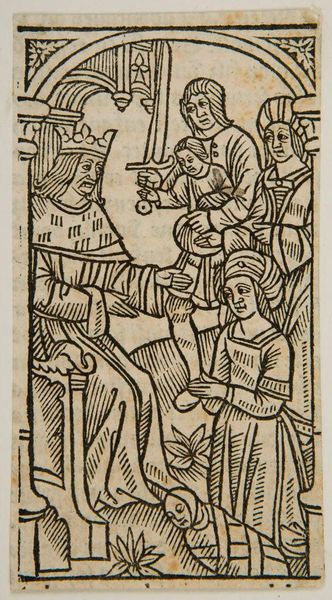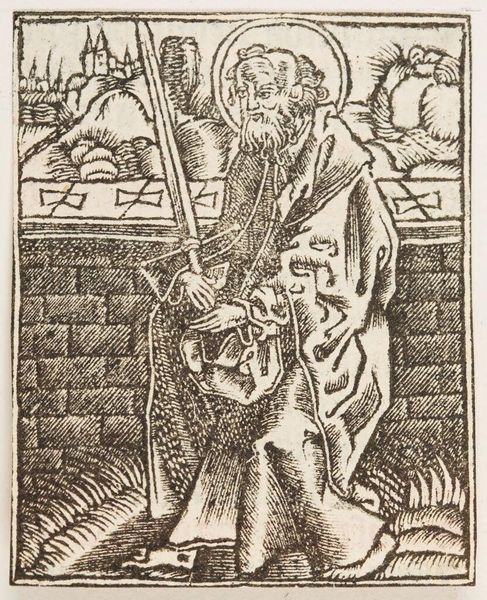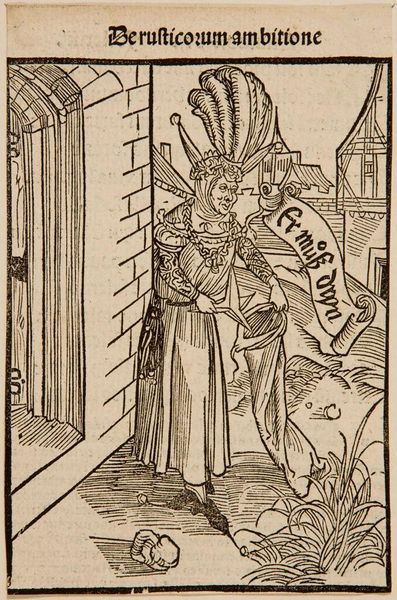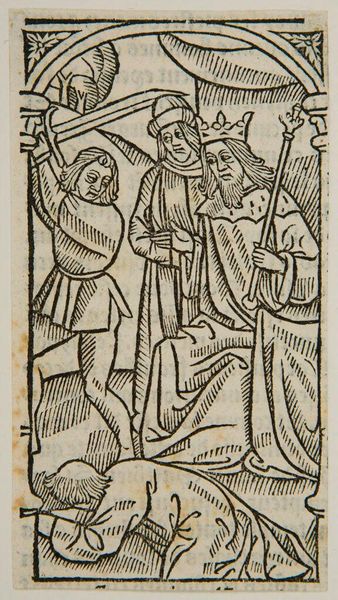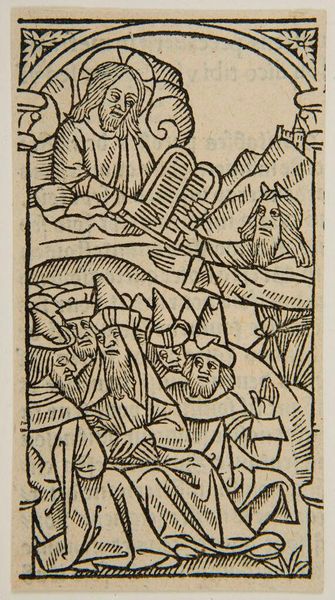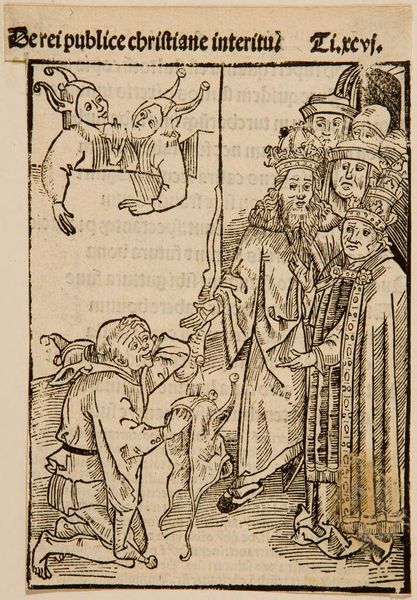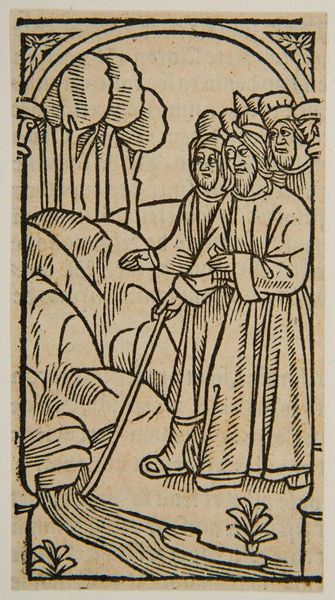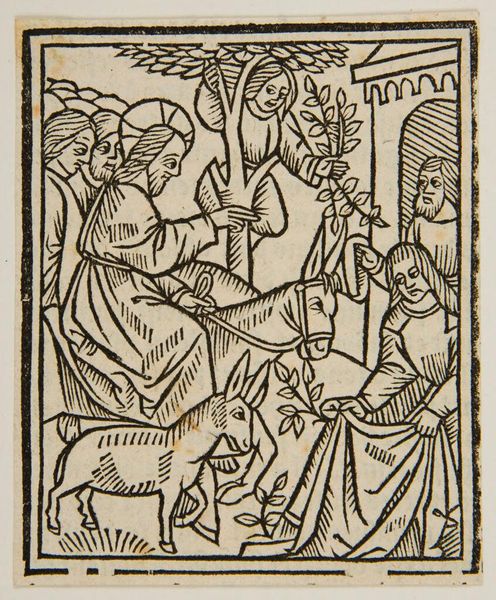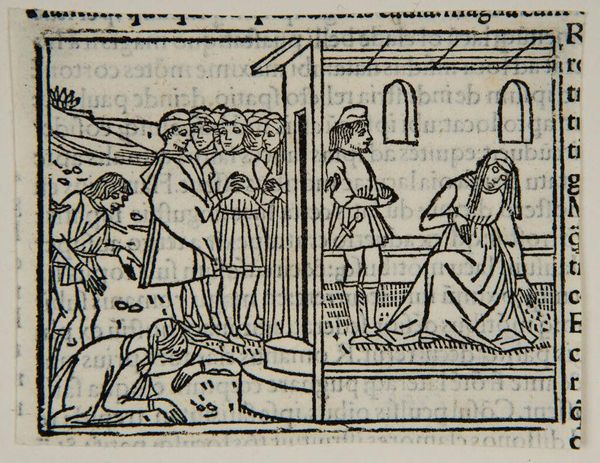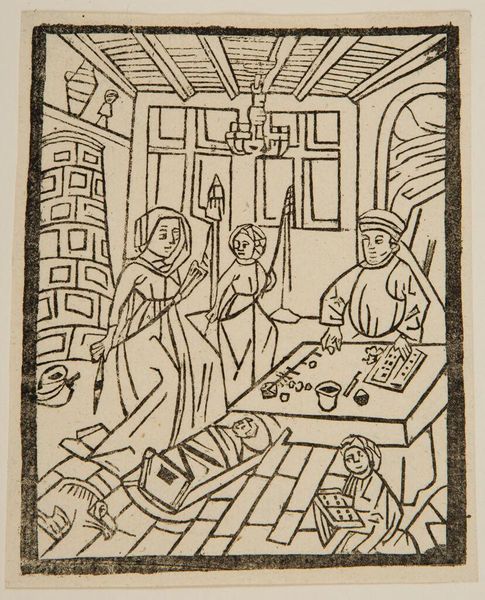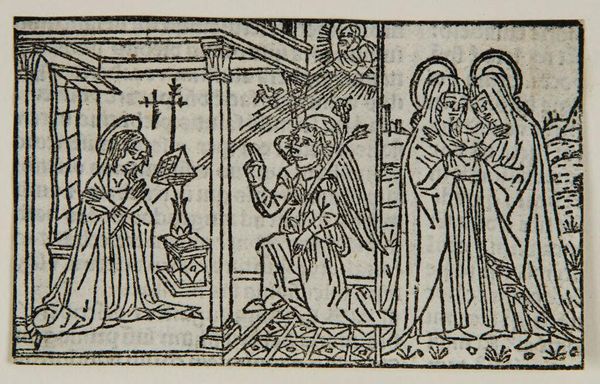
drawing, print, woodcut
#
drawing
#
medieval
#
narrative-art
# print
#
book
#
figuration
#
woodcut
#
men
#
pen work
#
italian-renaissance
#
italy
Copyright: Public Domain
Curator: This striking piece is titled "Arte del Ben Morire," created around 1490. It's currently held at the Metropolitan Museum of Art. The work is a woodcut, falling within the broader category of prints and drawings from the Italian Renaissance. Editor: Well, my immediate impression is that it's incredibly unsettling. The stark black lines against the white create this sense of starkness and anxiety. There's a chaos to the composition that feels very deliberate, with the eye darting between figures and scenes. Curator: Precisely. As a print intended for a book, the woodcut medium was highly efficient for disseminating the "art of dying well," which was quite a social preoccupation during that era. Its proliferation reflects anxieties surrounding death and salvation, especially among the burgeoning middle class. Editor: Looking closely at the lines, one can appreciate how effectively they delineate form and narrative within the restricted range of values. See how the engraver differentiates textures, the way he uses hatching for shading. And there's that dynamism, as well, through diagonal orientations in the compositions elements that imply depth despite the flat, compressed space of the pictorial field. Curator: The subject is quite explicit in its instructional purpose. Here you see a dying man assailed by demons while angels offer salvation—it’s didactic theater aimed at preparing people for their final moments. Notice the material aspects that speak to contemporary belief; The religious clothing that would distinguish each figure, the specific positioning of hands or of objects of ritual to create the proper narrative of faith and protection in death. Editor: Indeed, one could dissect the semiotics of the piece extensively. For example, the devils depicted as monstrous figures offer a visual interpretation of internal turmoil, or struggle. On the other hand, we have that serene expression from the angel at the foot of the deathbed, which gives peace and hope amid the conflict. All carefully arranged around the central figure of the dying man to pull out the feelings needed for a religious reawakening. Curator: I find the work compelling when you consider its relationship to labor. The production of prints became highly industrialized as the demand rose with new mercantile capitalism. An object created to assist one at their death and to also show wealth because having that guide demonstrates social privilege in late fifteenth century Italy. Editor: Thinking about that formal aspect alongside the content... it truly exemplifies the way that Renaissance artists integrated classical principles with overtly Christian themes to create a singular expression that defines both religious practice and cultural self-understanding. Curator: Yes, by viewing the artwork we have just entered, if only momentarily, a world mediated by both economics and piety in late fifteenth century Italy. Editor: It has certainly invited a fruitful analysis.
Comments
No comments
Be the first to comment and join the conversation on the ultimate creative platform.
